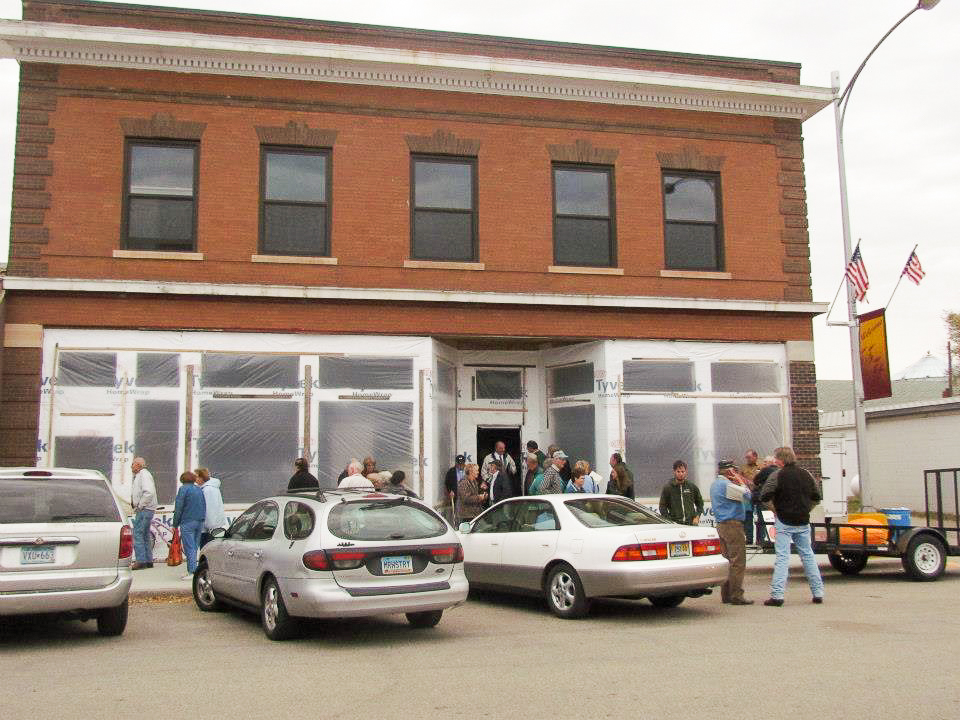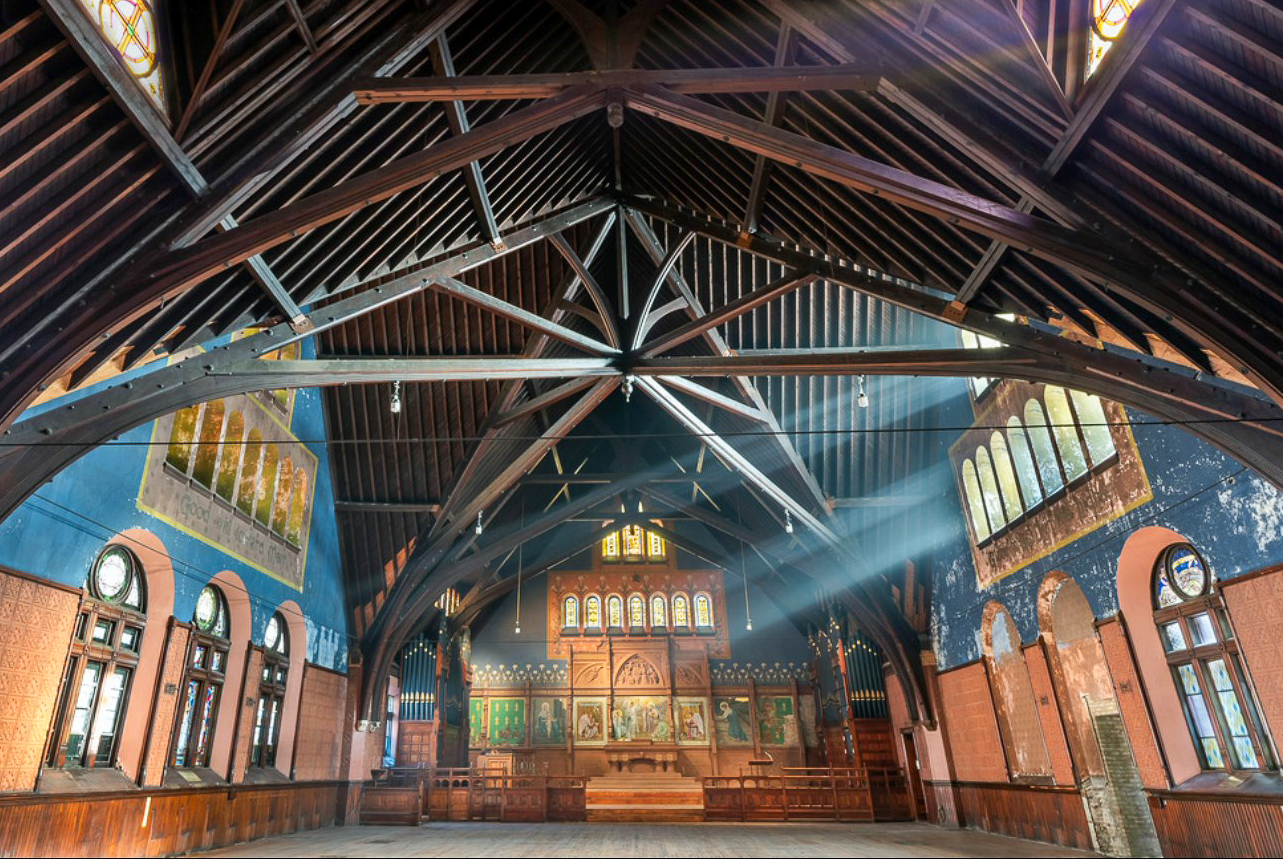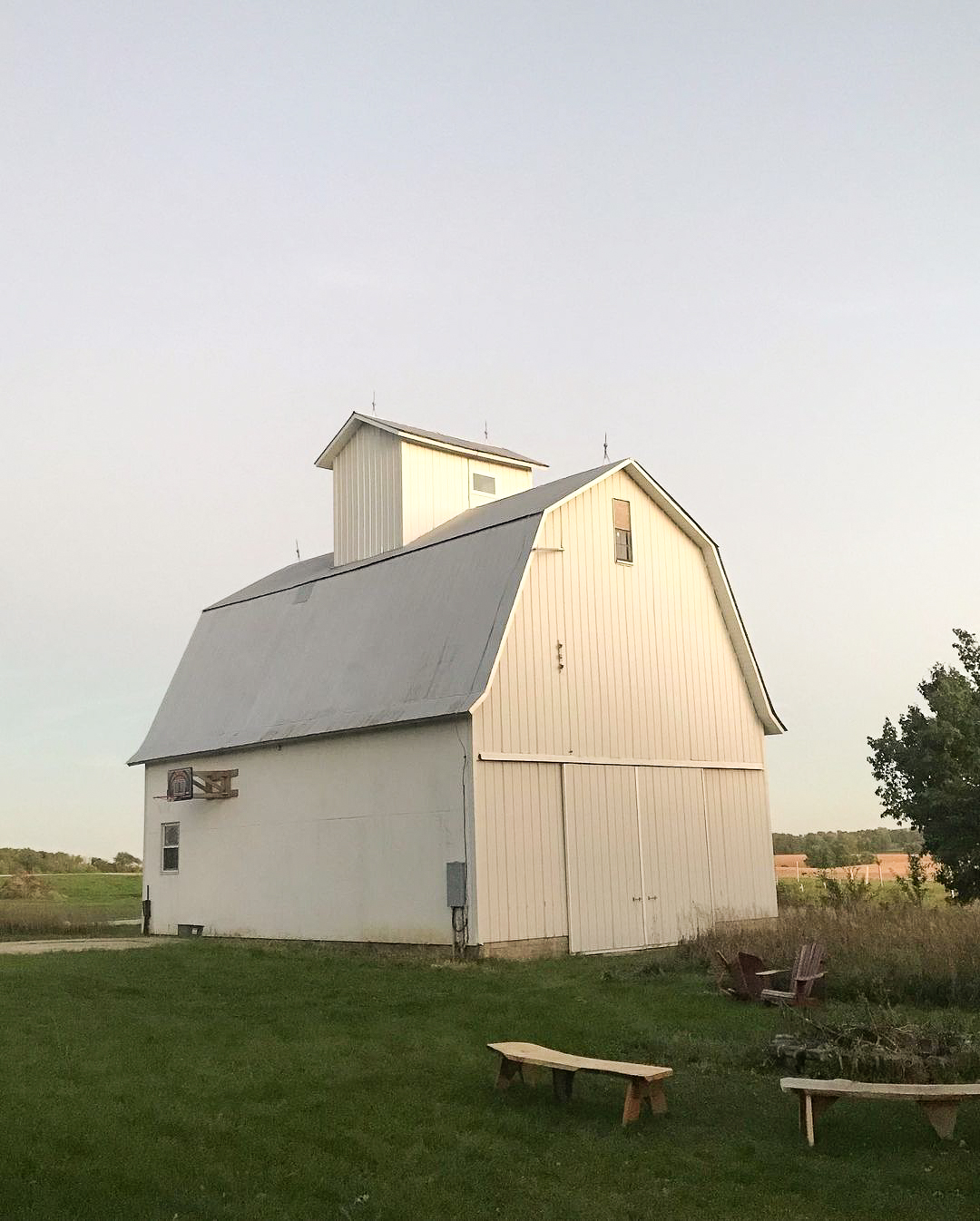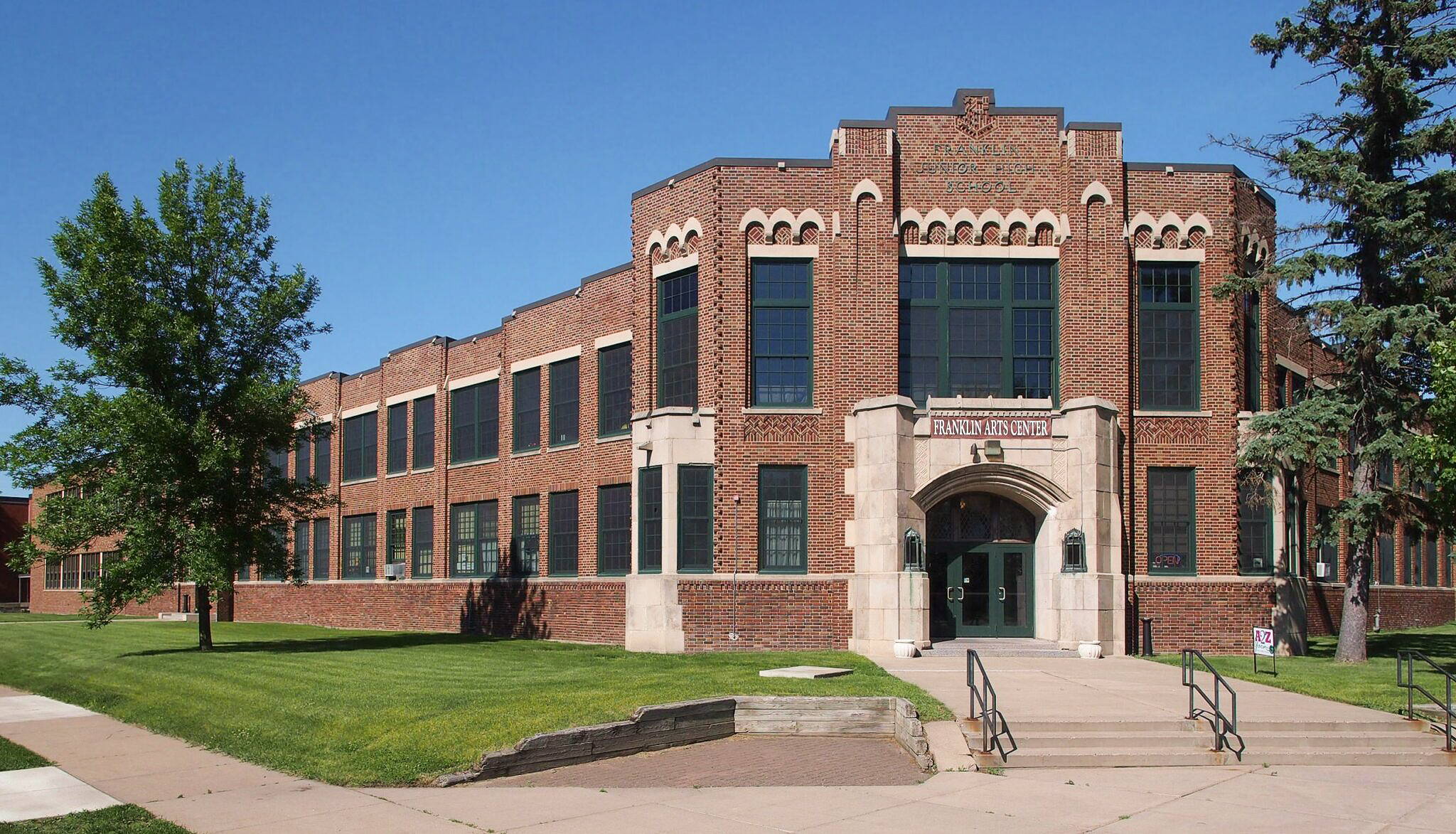Across the Midwest, people are giving new purpose to old buildings in their communities and turning them into art spaces. Long-standing structures are becoming museums, galleries, community centers, and artist studios.
A Neighborly Restoration Project

Have you ever dreamed of owning an abandoned opera house with 160 of your neighbors? The community of Maddock, North Dakota (population of 381 in 2021), did just that! They rolled up their sleeves and got to work, using no outside contractors, just community members sharing their skills (and learning new ones), to restore the Harriman Building on Main Street, built in 1906. Their member-owned nonprofit of dedicated volunteers put in time, funds, and labor to give the Maddock Opera House a new lease on life. After a successful community-led fundraiser, the building is now home to a community library, coffee shop, restaurant and bar, and offers meeting rooms and the ballroom for community gathering and programming.
Read more:
-
1
Restoring Community History
They bought the building from the city for a dollar in 2009. “There was a lot of skepticism. I think a lot of people thought we were crazy,” said one of the first member-owners. Read more via The Dakotan.
-
2
Renovated Maddock Opera House Now Center of Activity
In its heyday, the upper floor was used for events including stage productions, vaudeville performances and as a gymnasium. People also roller skated there. Read more via the Pierce County Tribune.

A Sanctuary for Live Performance
A couple in Chicago, Illinois, saw that the historic church they got married in was up for sale in their West Loop neighborhood. Guided by the spirit of congregation, they developed it into a cultural hub to bring people together for performing arts. The former historic Church of the Epiphany (built in 1885) is now the Epiphany Center for the Arts—a 42,000-square-foot gathering space for dance, theater, literary arts, comedy and magic, and a special live performance venue with charming acoustics.
Read more:
-
1
Epiphany Center for the Arts has a Mission to Bring All of Chicago Together
During the civil rights movement, it was “The People’s Church,” hosting regular meetings of the Black Panthers. In 1969, slain Black Panther Party leaders Fred Hampton and Mark Clark were memorialized there. Read more via the Chicago Sun Times.
-
2
Chicago’s Newest Music Venue, Epiphany Center for the Arts, is Staging Live, Social-Distanced Indoor Shows
At the sprawling campus, patrons enter a lounge area with a long bar and seating made from the pews that once lined the church. From there, guests can enter the largest venue on the property called Epiphany Hall, which can hold just under 1,000 people in non-pandemic times. Read more via Block Club Chicago.
A Vacant Industrial Building to an Artist-Run Space
It can’t get more tubular than this! Indianapolis-based art and design nonprofit, Big Car Collaborative, believes that “artists can and should support life in neighborhoods through culture, creativity, and community.” In the last few years, they have been working on revitalizing the Garfield Park area, with artists and art at the center of the work. In 2016, they opened Tube Factory. Once an empty 12,000-square-foot manufacturing building, it is now an artist-run “hybrid between an art museum and community center.”
Read more:
-
1
How Big Car Collective is Walking the Tightrope in Garfield Park
In Garfield Park, Big Car has been trying to answer a question that has vexed community developers for decades: How can a neighborhood make a comeback while keeping its artistic community and lower-income residents? Read more via Indianapolis Monthly.
-
2
Big Car Opens Garfield Park Headquarters
The project, which blends creativity, engineering, residential development and contemporary art, is an example of “guerrilla city planning,” said Big Car co-founder Shauta Marsh. That’s because Big Car’s mantra centers around “placemaking” and examining how people interact with public spaces. Read more via the IndyStar.
A Corn Crib to a Three-Story Art House
Corn crib is basically what you think it means—a home for corn. More specifically, a space to dry and store corn. In 2012, when artist Joe Luggle Lacina moved back to his hometown of Grinnell, Iowa, he quickly realized the positive impact space and quiet had on his art practice. With a passion for built environments and wood working, he recently started renovating a three-story corn crib (built in 1938) on his family farm north of Grinnell to be an art space. Grin Cupola is an “unhurried art gallery” where the third floor is the “cupola outlook” with a 180-degree view of surrounding farmlands and the town. The space opens this spring.

Read more:
-
1
Grinnell Artist Finds Meaning in the Making
While he was still in school, he brought some friends back home during the summer of 2006 to enjoy the fresh air and make some art. They exhibited — and sold — a lot of their work at the end of their stay, kick-starting the successful artist-in-residence program known as the Grin City Collective. Read more via Iowa Arts Council.
-
2
Grin Cupola’s 2023 Exhibitions Call For Entry
Grin Cupola is seeking applications for its 2023 Web/Virtual exhibitions, consisting of three-five artists, selected works will be on view at www.grincupola.com for the duration of one year. Additionally, Web/virtual exhibitions will be displayed in the physical space via projections and curated screens. Read more via Grin Cupola.

An Arts Live/Work Space Brimming with Creativity
What’s better than demolishing a 90,000-square-foot decommissioned junior high school building? Forming a citizen’s committee to find a smarter, artful use for it. Community members in Brainerd, Minnesota, worked with the Twin Cities-based nonprofit Artspace to open the Franklin Arts Center in 2008. Since then, it has become the focal point for art and creativity in this city of 14,000 people. This thriving, collaborative ecosystem is home to artists and their families in the building’s 25-unit live/work apartment section and has over 37,000 square feet of artist studios and space for arts organizations and creative businesses. Its two gymnasiums and auditorium are operated as community spaces by the school district.
Read More:
-
Art at the Heart of Franklin Art Center
These days, a full 44 tenants operate within the commercial wing, ranging from architectural designers to composers to painters. Sixteen years after its birth, the vision of a community space dedicated to the arts is thriving, tenants say, buoyed by boundless reinvention. Read more via the Brainerd Dispatch.
-
Franklin Arts Center Keeps Historic Building In Bloom
Art is loosely defined and all inclusive in the Franklin Arts Center showcasing numerous mediums such as painting, pottery, sewing, photography, theatrical art, musical art, and a cast of others. This creates a well-rounded establishment that enhances the art community. Read more via the Brainerd Dispatch.
These are only a few of the many incredible adaptive reuse projects taking place in cities and towns across the Midwest. Maybe they will inspire something in your community? After all, some of the most creative, innovative things happen when we look at existing resources with a fresh lens. Did this piece remind you of people and spaces who are doing similar work in your community? We would love to hear about it if so! Tell us all about it by submitting a pitch.
